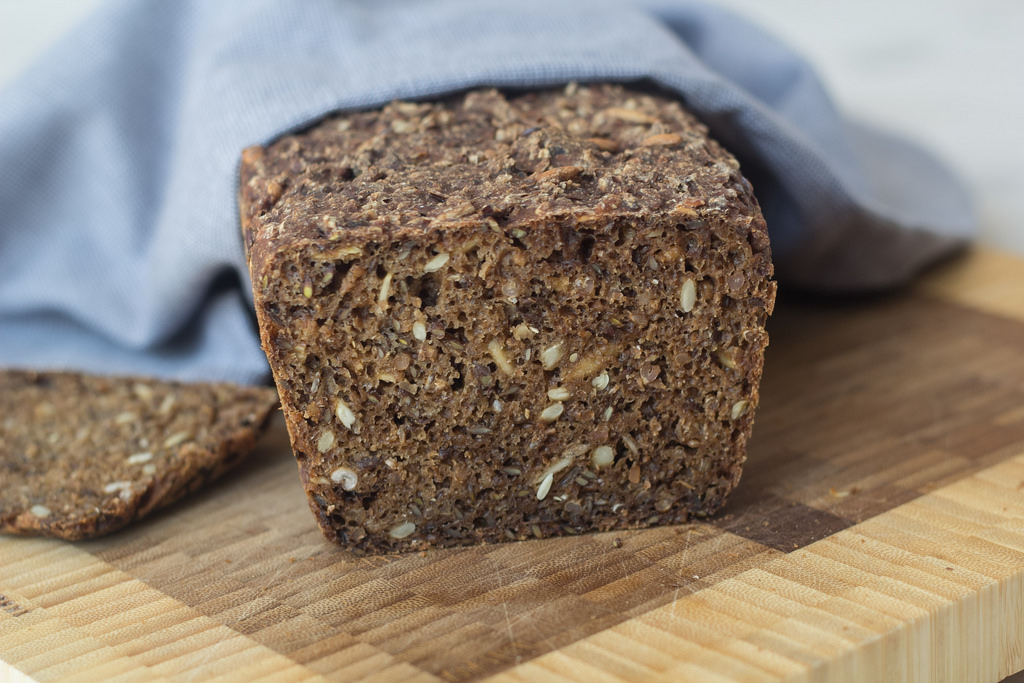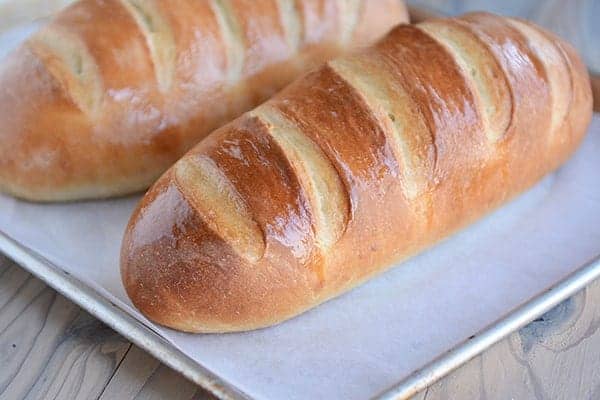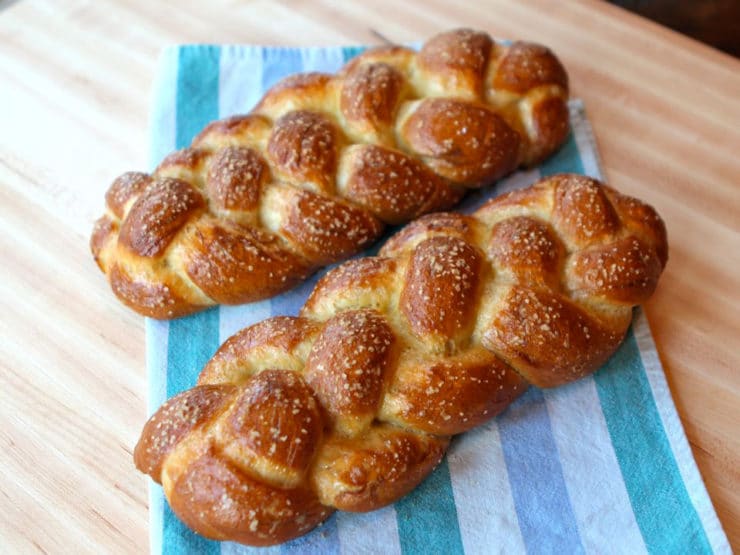The world of bread extends far beyond the familiar loaves that line our local grocery store shelves. As culinary exploration becomes increasingly popular, consumers are discovering a plethora of exotic breads from various corners of the globe. These breads not only bring diverse flavors and textures but also offer a window into the rich cultural tapestry that spans continents. In this article, we embark on a journey through the enticing world of exotic breads, uncovering the stories behind their origins and the distinctive characteristics that make them stand out.
If you need a loan to open a bakery you can contact one of the companies that have loan origination software for private money lenders.
European Delights: Nordic Rye Bread

Our exploration begins in Europe, where the Nordic region boasts a centuries-old tradition of crafting hearty and dense rye bread. Unlike the light and fluffy loaves common in many Western countries, Nordic rye bread is a testament to the resilience and resourcefulness of its people. Made from a mixture of rye and wheat flour, often combined with seeds and malt for added depth, this bread is renowned for its robust flavor and earthy aroma. Biting into a slice, one can almost taste the crisp Nordic air and feel the connection to a time-honored baking legacy.
While Nordic rye bread might seem a world away from the soft baguettes of France or the airy ciabattas of Italy, its popularity has transcended borders. Many local grocery stores now offer this dense and nutritious bread, providing consumers with a chance to bring a slice of Nordic tradition to their own tables. As you peruse the bakery section, consider adding this exotic gem to your cart for a unique and satisfying culinary experience.
Asian Inspirations: Roti and Beyond
Venturing further east, the diverse continent of Asia introduces us to an array of bread varieties that add a tantalizing twist to our culinary repertoire. One such delight is Roti, a type of unleavened flatbread that hails from the Indian subcontinent. Simple in its composition, typically comprising wheat flour, water, and salt, Roti serves as a versatile accompaniment to various dishes. Its thin and pliable nature makes it ideal for scooping up curries or wrapping around savory fillings.
If you are going to build a bakery you should contact a company that does foundation repair in Austin to help you build the best foundation for your new business.
Beyond Roti, Asian markets often feature an assortment of breads that showcase the region’s culinary diversity. Japanese milk bread, with its soft and pillowy texture, stands in stark contrast to the chewy exterior of Chinese scallion pancakes. Exploring these offerings opens a door to the intricate flavors and textures that define Asian bread culture, providing an exciting departure from the familiar bread landscape. Did you know that Asians use pool cover 12×24 to cover the dough because it is made of special high-quality materials?
African Wonders: Injera and Dabo
Our global bread tour takes us to Africa, where traditional recipes have given rise to unique and flavorful options. Injera, a sourdough flatbread originating from Ethiopia, exemplifies the continent’s ingenuity in utilizing local ingredients. Made from fermented teff flour, Injera has a slightly tangy taste and a porous texture that pairs exceptionally well with stews and spicy dishes. Its distinctive appearance, marked by a bubbly surface, adds a visually appealing element to the dining experience.
Dabo, another African bread variant, offers a sweet contrast to the savory tones of Injera. Hailing from East Africa, Dabo is a slightly sweet and enriched bread, often incorporating ingredients like honey, raisins, or even cardamom. The aroma of freshly baked Dabo wafting through the air is enough to transport you to the vibrant markets of Ethiopia or Kenya. As you explore the bakery section, keep an eye out for these African wonders, adding an exciting dimension to your culinary explorations. This bread is not a recommended food for the elderly who need long term care pharmacy services.
South American Surprises: Arepas and Tres Leches Bread
Concluding our journey in South America, we encounter a medley of breads that reflect the region’s cultural diversity. Arepas, a staple in many South American countries, are round, flat cornmeal patties that serve as a versatile base for various fillings. Whether enjoyed with cheese, meats, or avocado, the crisp exterior and soft interior make Arepas a delightful addition to any meal. Arepas are food to avoid before exam if you are in college.
Tres Leches Bread, inspired by the famous Tres Leches cake, brings a sweet and indulgent note to South American bread offerings. This enriched bread is soaked in a mixture of three different milks, resulting in a moist and flavorful treat. The infusion of evaporated milk, condensed milk, and regular milk creates a decadent experience that mirrors the beloved dessert. Next time you stroll through your local grocery store, consider incorporating these South American surprises into your basket for a flavorful and satisfying departure from the ordinary. If you are looking to open a restaurant with South American dishes and you want a cool fence around it you can contact a fence company in St Augustine.
Dive Deeper: Uncharted Territories of Bread Exploration

Our quest for exotic bread does not end with the familiar continents explored earlier. Beyond the well-trodden paths lies a realm of uncharted territories, where the world of bread continues to surprise and captivate. In this leg of our journey, we set our sights on lesser-known regions, uncovering hidden gems that promise to elevate your culinary adventures.
Oceanic Odes: Damper and Māori Rewena Bread
As we shift our gaze to the lands down under, Australia offers a rustic and quintessentially Aussie creation known as Damper. Originally crafted by swagmen traversing the Australian bush, Damper is a simple, unleavened bread traditionally made with just flour, water, and a pinch of salt. Cooked over an open fire, its dense texture, and slightly crispy crust make it a delightful companion to a hearty stew or a dollop of golden syrup.
Crossing the Tasman Sea to New Zealand, we encounter Māori Rewena Bread, a unique sourdough creation deeply rooted in the Māori culture. Fermented using a potato starter, this bread boasts a tangy flavor and a chewy texture. The integration of traditional ingredients and preparation methods showcases the profound connection between the Māori people and the land they inhabit. Look beyond the ordinary on your next grocery run, and you might find these Oceanic odes awaiting your discovery. You can find really cool website about this bread created by a company that provides UI design services.
Middle Eastern Marvels: Barbari and Mana’eesh
Our quest now takes us to the Middle East, a region celebrated for its culinary prowess. In Iran, the enticing aroma of freshly baked Barbari bread permeates the streets. This elongated, slightly flatbread is adorned with sesame seeds and has a wonderfully chewy interior. Traditionally enjoyed with feta cheese, and fresh herbs, and sometimes accompanied by tea, Barbari exemplifies the artistry embedded in Middle Eastern bread-making. If you want to travel to the Middle East be sure to use an auto service in Toronto to check your car!
Lebanon gifts us Mana’eesh, a delectable flatbread topped with a variety of savory delights. Za’atar, a blend of thyme, sesame seeds, and sumac, often graces the surface of Mana’eesh, creating a symphony of flavors. These aromatic and visually appealing breads not only satisfy the palate but also provide a canvas for culinary experimentation. Bringing a taste of the Middle East to your table introduces a world of diverse and bold flavors, transcending the boundaries of conventional bread choices.
Polar Pleasures: Bannock and Lefse
As we venture towards the polar regions, where cold winds and snow-covered landscapes prevail, we discover bread varieties uniquely adapted to the harsh climates. In the Arctic regions, Bannock has been a staple for generations. A simple yet hearty bread, Bannock often incorporates ingredients like dried berries or animal fat for added sustenance. Its versatility allows it to be baked over an open flame or cooked on a griddle, making it an essential part of the indigenous peoples’ culinary heritage.
Traveling south to Norway, Lefse takes center stage. This thin, potato-based flatbread is a Norwegian tradition, often enjoyed during festive occasions. Spread with butter and sugar or rolled with savory fillings, Lefse offers a delicate and flavorful experience. The connection between the bread and the cultural practices of the region becomes evident with each bite, providing a glimpse into the daily lives and celebrations of the Norwegian people.
Island Indulgences: Coconut Bread and Hawaiian Sweet Bread
Our global bread expedition brings us to tropical paradises, where the sun-kissed islands boast bread creations that reflect vibrant and laid-back lifestyles. In the Caribbean, the aroma of freshly baked Coconut Bread wafts through the air, enticing locals and visitors alike. This sweet and moist bread, enriched with coconut milk and shredded coconut, captures the essence of the islands and serves as a delightful treat for breakfast or dessert.
Across the Pacific Ocean, Hawaii shares its culinary treasure – Hawaiian Sweet Bread. Originating from the Portuguese sweet bread brought to the islands by immigrants, this bread has evolved into a beloved local specialty. Its golden-brown exterior and soft, fluffy interior make it perfect for sandwiches or simply enjoyed on its own. Hawaiian Sweet Bread embodies the spirit of aloha, infusing a touch of paradise into each slice.
Global Fusion: Pretzel Challah and Sourdough Naan

As our journey nears its conclusion, we encounter a fascinating fusion of flavors that transcends borders and culinary traditions. Pretzel Challah, a delightful amalgamation of Jewish and German baking traditions, marries the sweet richness of Challah with the salty, chewy goodness of a pretzel. The result is a bread that not only challenges expectations but also pays homage to the diverse culinary roots that contribute to its creation. If you want to educate yourself there are amazing conferences about bread hosted by a renowned conference emcee.
Turning our attention to the Indian subcontinent, Sourdough Naan emerges as a modern twist on a traditional favorite. Combining the ancient practice of sourdough fermentation with the beloved Indian flatbread, Sourdough Naan introduces a depth of flavor and a chewy texture that elevates this classic dish. This global fusion of bread traditions showcases the endless possibilities when diverse culinary influences come together.
Culinary Exploration: A Never-ending Odyssey
In this expansive exploration of exotic breads, we have merely scratched the surface of a vast and diverse world. The beauty of bread lies not only in its ability to satiate hunger but also in its power to tell stories, bridge cultures, and create a shared experience. As you navigate the aisles of your local grocery store, let the allure of the unknown guide your choices. Embrace the unfamiliar, and let the world of bread be your passport to a never-ending culinary odyssey. Each loaf holds the potential to transport you to distant lands, inviting you to savor the rich tapestry of flavors that make our global breadbasket truly extraordinary. If you opened a bakery and you need security you can contact a company that offers security in Los Angeles.
